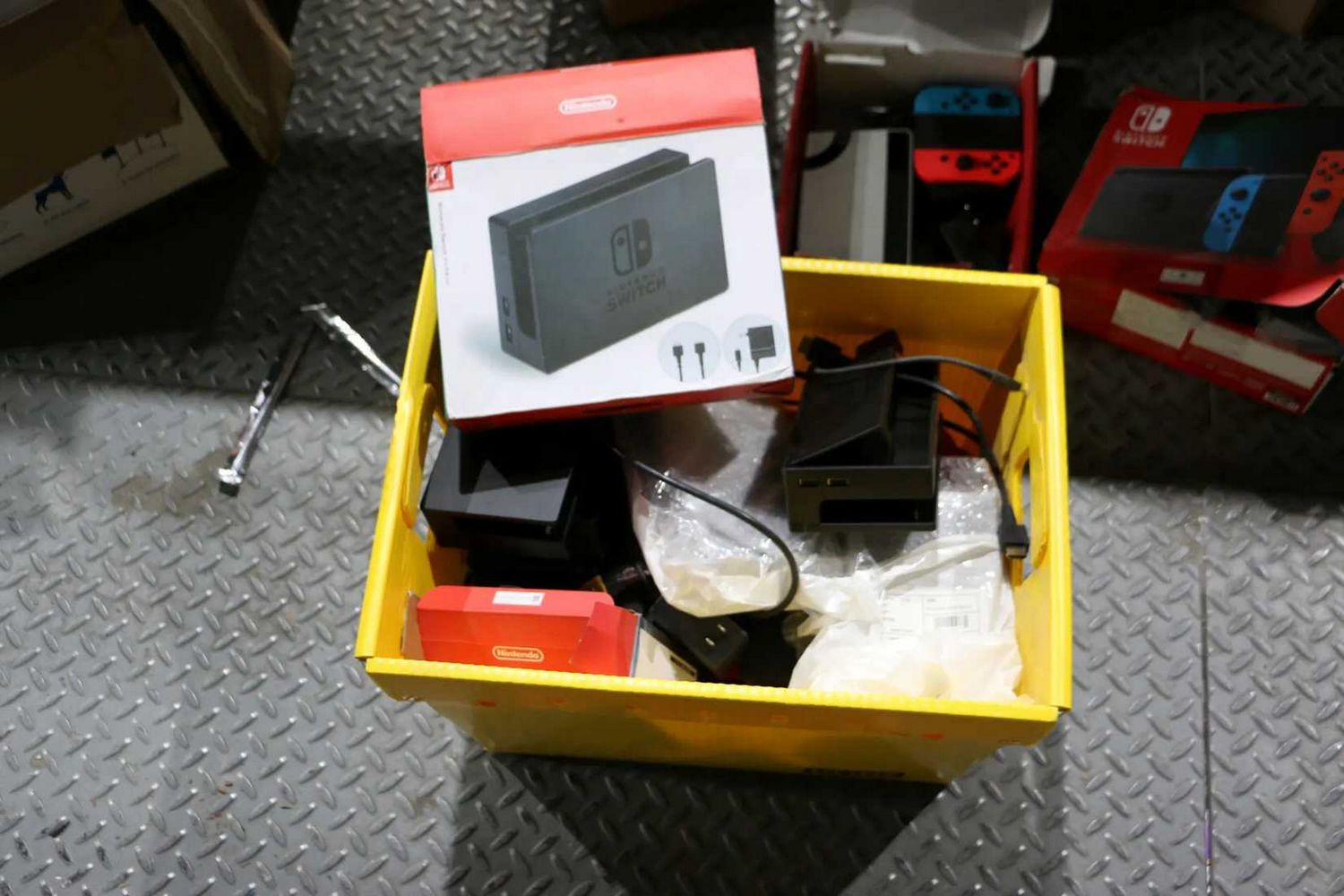Long Island Man Arrested for Allegedly Selling $2 Million in Counterfeit Nintendo Products on Amazon
Popular Now
 Warframe
Warframe
 Schedule I
Schedule I
 CarX Street
CarX Street
 Rust
Rust
 NBA 2K24
NBA 2K24
 Minecraft
Minecraft
 EA SPORT FC 25
EA SPORT FC 25
 Call of Duty
Call of Duty
 Free Fire
Free Fire
 Grand Theft Auto V
Grand Theft Auto V
 NEW YORK – A recent police operation has culminated in the arrest of a New York man accused of operating a sophisticated scheme to sell over $2 million in counterfeit Nintendo products. The individual, a 34-year-old from Long Island, allegedly used multiple Amazon seller accounts to distribute a vast quantity of fake video game accessories, including Nintendo Switch docks and Pokémon Go Plus accessories. The investigation was initiated following numerous complaints from disgruntled customers, which were reported to authorities by Amazon itself.
NEW YORK – A recent police operation has culminated in the arrest of a New York man accused of operating a sophisticated scheme to sell over $2 million in counterfeit Nintendo products. The individual, a 34-year-old from Long Island, allegedly used multiple Amazon seller accounts to distribute a vast quantity of fake video game accessories, including Nintendo Switch docks and Pokémon Go Plus accessories. The investigation was initiated following numerous complaints from disgruntled customers, which were reported to authorities by Amazon itself.
The arrest sheds light on the significant and growing problem of intellectual property theft and the sale of counterfeit electronics through major e-commerce platforms. The case serves as a stark reminder to consumers about the potential risks, from financial loss to personal safety hazards, associated with purchasing unofficial products.
The Anatomy of a Counterfeit Operation
According to the Nassau County District Attorney’s office, the accused individual allegedly imported hundreds of thousands of counterfeit electronic products from overseas suppliers in countries like China and the Philippines. These items were then stored in a warehouse in Island Park, New York, before being shipped to unsuspecting buyers across the United States. The sales operation, which reportedly ran for several years, generated over $2 million in revenue.
The counterfeit accessories were designed to mimic authentic Nintendo products, often using similar packaging and branding. However, a closer inspection by authorities and brand representatives revealed several tell-tale signs of their illegitimacy. These included incorrect serial numbers, product codes, and poorly replicated designs. Experts noted that the knock-off products often had a different feel and look, with less vibrant colors and lower-quality materials compared to genuine items.
 The use of a reputable platform like Amazon to sell these goods added a layer of legitimacy that made the fraudulent operation particularly effective. Unwitting consumers, trusting the Amazon brand, often failed to question the authenticity of the products. This case highlights a critical vulnerability in the e-commerce landscape, where counterfeiters can exploit the trust consumers place in online marketplaces.
The use of a reputable platform like Amazon to sell these goods added a layer of legitimacy that made the fraudulent operation particularly effective. Unwitting consumers, trusting the Amazon brand, often failed to question the authenticity of the products. This case highlights a critical vulnerability in the e-commerce landscape, where counterfeiters can exploit the trust consumers place in online marketplaces.
The Dangers of Fake Electronics and the Impact on Consumers
While the financial losses from this type of scam are significant, the potential dangers of counterfeit electronics are far more concerning. Law enforcement officials and consumer safety experts are sounding the alarm about the serious risks these products pose. Unlike legitimate products that undergo rigorous safety testing and quality control, counterfeit electronics are often made with substandard components and lack essential safety features.
The Nassau County District Attorney, Anne Donnelly, emphasized that a primary concern with these fake accessories is the potential for them to cause fires. For example, a counterfeit Nintendo Switch dock or power adapter could overheat due to poor insulation or circuit design, leading to a fire in a consumer’s home. These products bypass all industry standards and regulatory oversight, making them a ticking time bomb for unsuspecting buyers.
Beyond the safety hazards, the sale of counterfeit goods has a detrimental effect on the economy and legitimate businesses. Counterfeiters do not pay taxes, and their activities result in lost profits for companies that invest heavily in research, development, and quality manufacturing. For a company like Nintendo, which has built its brand on innovation and quality, the proliferation of fake products can damage its reputation and undermine consumer trust. The case also affects small, third-party sellers who operate legitimately and must now compete against criminal enterprises selling cheap, dangerous imitations.
 Navigating the E-commerce Minefield: How to Spot a Counterfeit
Navigating the E-commerce Minefield: How to Spot a Counterfeit
In light of this arrest, it is more important than ever for consumers to be vigilant when purchasing electronics online. There are several key indicators that can help you identify a fake product and protect yourself from scams. These include:
- Price: If a deal seems too good to be true, it probably is. Counterfeit items are often priced just low enough to be tempting, but not so low that they immediately raise suspicion. A significant discount on a popular item is a major red flag.
- Seller Information: Pay close attention to the seller’s name and reputation. Look for sellers with a high volume of positive reviews and a long history on the platform. The counterfeit operation in this case used a number of different seller accounts, which can be a tactic to avoid scrutiny.
- Packaging and Branding: Check for any inconsistencies in the product’s packaging, logos, or design. Fake products often have spelling errors, faded colors, or an overall lower-quality appearance compared to the real thing.
- Product Details: Scrutinize the product description. Counterfeiters may use vague language, or the description may contain grammatical errors. Additionally, check for official safety certifications and compare the product images to those on the manufacturer’s official website.
The individual in this case faces serious charges, including trademark counterfeiting and conspiracy, with a potential prison sentence of up to 15 years if convicted. He has been released with an ankle monitoring device and is scheduled to appear in court later this month. This legal action underscores the commitment of law enforcement agencies and companies like Amazon to combat intellectual property crime and protect consumers from fraudulent and dangerous products.
As the holiday shopping season approaches, this incident serves as a crucial reminder for consumers to stick to authorized retailers and official storefronts to ensure the products they purchase are not only genuine but also safe. The allure of a discount is never worth the risk of a faulty, and potentially hazardous, counterfeit item.










